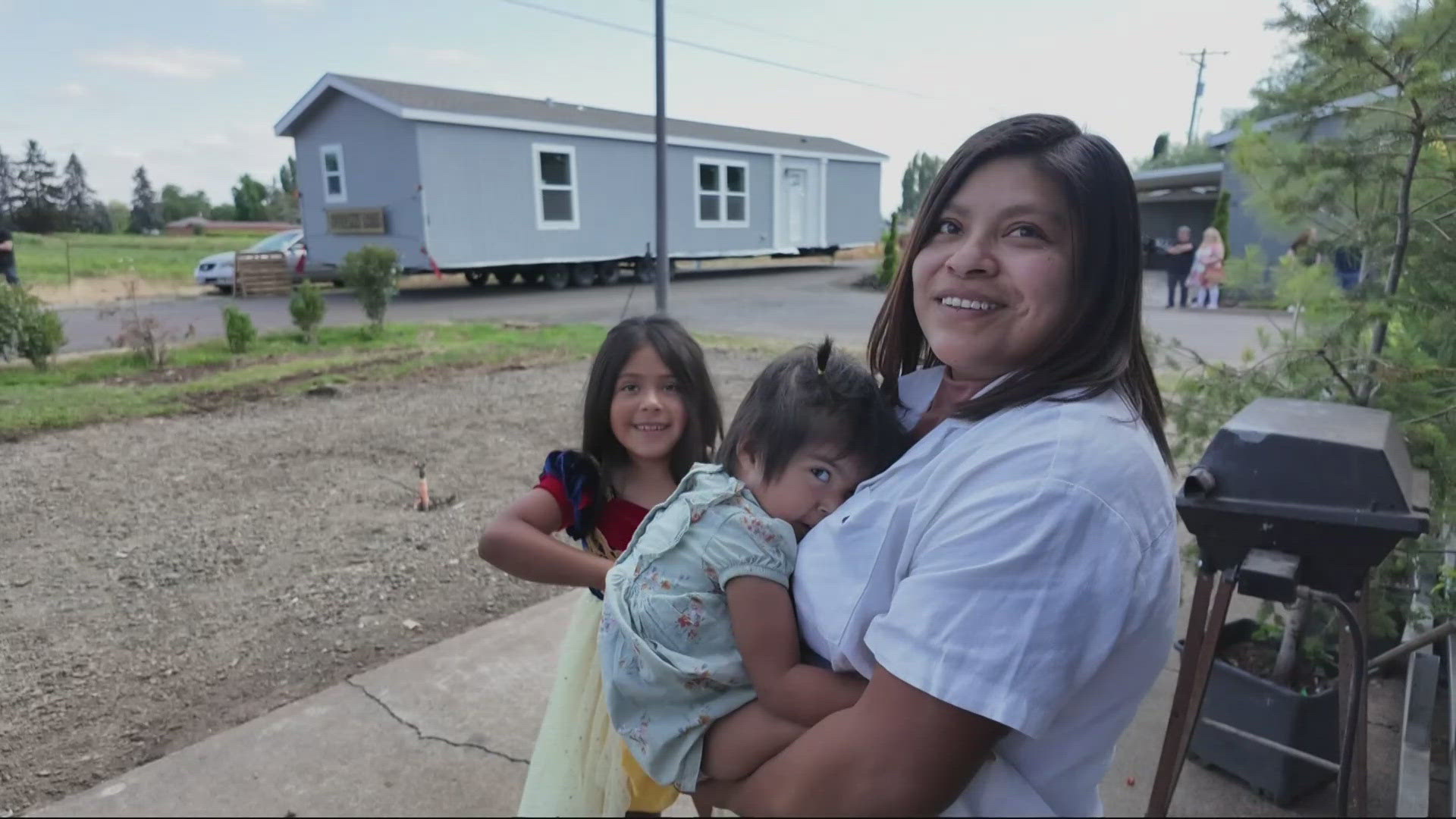WOODBURN, Ore. —
Elizabeth Vasquez had the jitters. Just before 11 a.m. on Monday, she waited anxiously next to the spot where her old, manufactured home used to stand in Woodburn.
The home had been demolished a few days before, and the lot was covered in freshly packed gravel, with pipes and wires jutting out of the ground in a few places.
“I’m really nervous,” Vasquez said. “I’m excited and nervous and anxious.”
The source of Vasquez’s excitement would arrive just a few minutes later: a brand-new Energy Star manufactured home, complete with high-efficiency appliances and windows.
“It’s like a dream right now,” Vasquez said as the truck carrying her new home pulled up. “Like, is this real? I feel like I’m floating.”
Vasquez is one of more than 90 people taking part in a program that helps low-income Oregonians upgrade older manufactured homes — which are often difficult, and expensive, to heat and cool — to new models that are much more efficient.
The program is a joint effort between Energy Trust of Oregon and Oregon Housing and Community Services.
“What we do is provide funding that helps offset the incremental costs of getting the new home,” said Scott Leonard, program manager with Energy Trust, noting that older homes often lack efficiency measures. “Pre-1995, there were no federal regulations that put into effect what the efficiency of the home would be.”
Eddie Sepeda is a program navigator with Energy Trust. For the last year, he’s helped Vasquez and her family through the application process and in selecting a new home.
“Energy trust has an incentive for manufactured home replacement. Up to $11,000 for a single wide, up to $16,000 for a double wide,” he said. “This family right here ended up getting $10,000.”
And he said the difference between an older home and the one being delivered is remarkable.
“The older homes, you’ll see 1-and-a-half or 2-inch exterior walls. The new homes nowadays are being built like regular homes with 6-inch exterior walls,” he said. “It’s such an upgrade.”
And those differences will amount to significant savings on utility bills, he said.
“I’ve heard of some families paying $350 or $400 dollars for a single wide home,” Sepeda said. “These new homes are energy efficient all around. It helps the family bring down their energy cost.”
Leonard emphasized that the program is open to everyone, though there are income requirements that must be met, and anyone interested should visit the Energy Trust website to connect with a navigator like Sepeda.
Vasquez said she still had fond memories of her former home.
“My old home, I mean it was home, but it needed a lot of money to put in to fix a lot of things. The ceiling was falling apart, the flooring, the siding, everything,” she said. “It was really cold.”
But as the truck pulled up with the new home and crews began using a remote-controlled tractor to maneuver it into place, Vasquez wasn’t thinking about the past.
“To see it become real now, it’s really exciting,” she said.
And as she cracked open the door and took her first steps inside, she was overcome.
“Oh, my goodness! Look at this!” she exclaimed, fawning over the new appliances in the kitchen and the island where she imagined her children eating home-cooked meals.
“I can’t express with words how I feel right now. My kids are happy, and I can’t wait to move in,” she said. “It’s not just like it’s a new home. For us, for my family, for me, it’s a new beginning. It’s a new life.”

